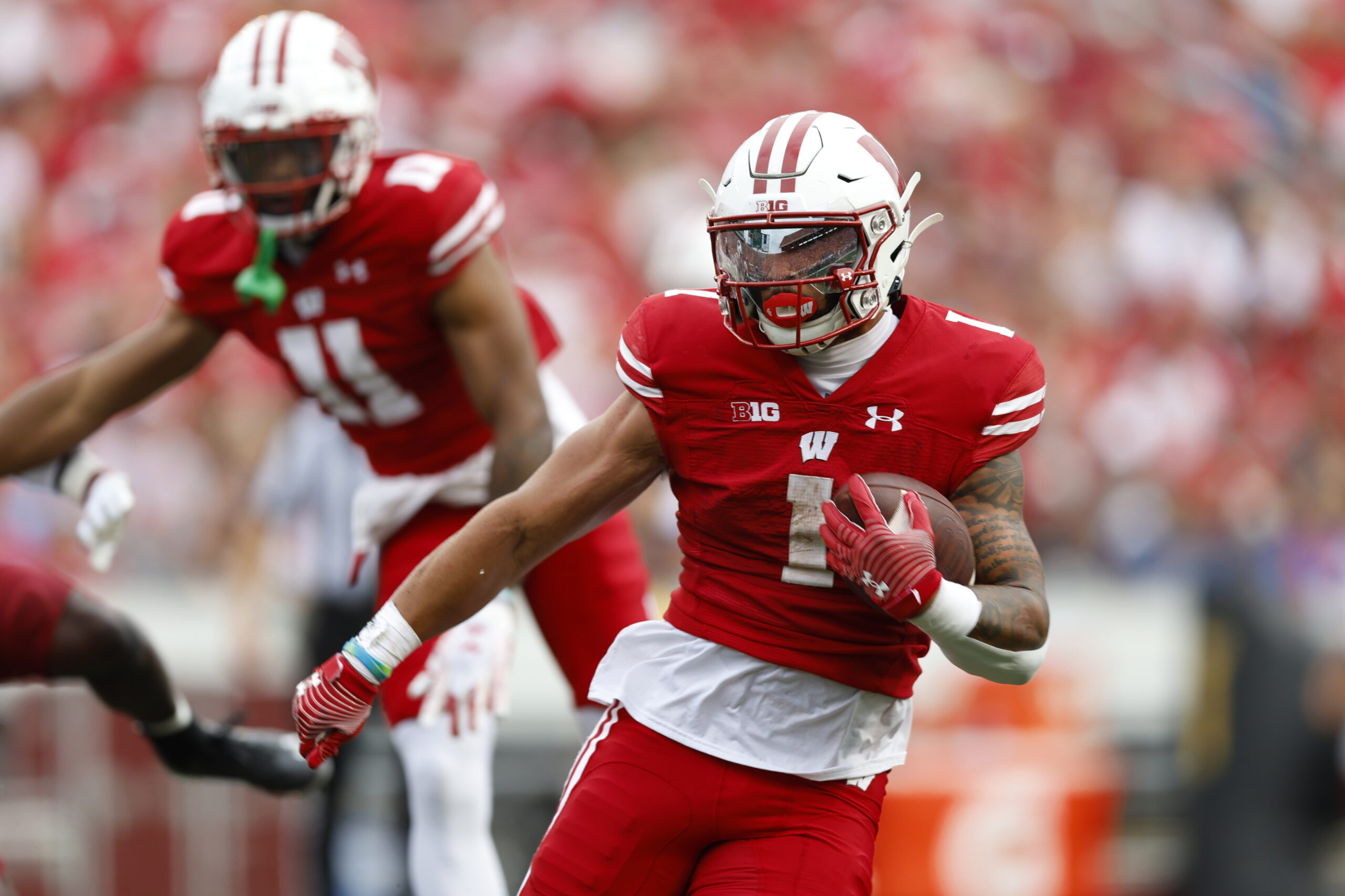Football
Wisconsin Football: Exploring the Badgers Dynamic Outside Zone Scheme
Class is in session. It’s time to learn about the Badgers’ outside-zone scheme.

Today, in Chapter 4 of our series introducing the Wisconsin Badgers football team’s Dairy Raid offense, we will delve deeper into the Air Raid rushing attack. Last week, we touched on the necessity for balance.
Not 50/50 run pass balance but the ability to attack the defense how they want to be attacked. With that in mind, more traditional Air Raid coaches are integrating a more diverse offensive strategy. It is possible to emphasize the core values of the Air Raid system in more ways beyond the traditional heavy pass game.
To review our last chapter, we introduced the idea of foundational blocking schemes. I use the term to describe a scheme that you can build an offense around. The inside zone is such a scheme. The inside zone is known for its versatility. It is a simple but effective scheme that can be used in multiple ways to attack the whole field. The ability to create double teams at the line of scrimmage using coordination and patience brings to the offense the ability to attack downhill while giving the ball carrier multiple running lanes.
The outside zone is a true Air Raid concept because it is all about getting athletes in space while creating vertical and horizontal stress. This is not something that one would think about when it comes to running the football, but as we dig into the inner workings of the Wisconsin football scheme, it should become apparent.
It’s All in the Name
Now let’s take a look at a blocking scheme in the Air Raid rushing attack that is often very misunderstood.
It is misunderstood because there is a misnomer right in the name of the scheme. The outside zone presents a more dynamic approach to running plays. It relies on horizontal movement and coordinated blocking schemes to create opportunities for running backs. The flow of the blocks and the backfield action put the defense in a fight or flight situation because it encourages a reaction.
Like the inside zone, the outside zone is a rules-based blocking scheme. The areas of responsibility have been adjusted to take into account the more horizontal nature of the blocking scheme. Now our blockers are responsible for the area from their playside shoulder to the playside shoulder of the play next to them.
This area sets the angle of attack and the flow of the blocks. With the understanding of our areas of responsibility, it’s important to determine if you’re covered or uncovered. It affects the type of blocking and the post-first step footwork that’s required.
Building Blocks Through Footwork
If you’re covered to the backside Wisconsin football coaches want to use that defender as a slingshot to gain momentum as we most likely move to the 2nd level. So as we step laterally we will push off that defender. If we are covered head up we will again anchor down with a drive block.
We will release this defender when the man next to us literally bumps us off of the defender. The anchor blocker stops momentum while the reach defender works to seal off the outside shoulder.
Finally, if we are covered to the playside shoulder, we want to take out the backside hand and work it down the middle of the blocker. Failing to get our hand in place, we would use our forearm. I tell my blockers you want to carry a playside-shaded defender to the 2nd level.
We can do this by a nice deep bucket step with our play side foot, which allows us to cross over our feet without getting them tangled or getting off-balanced.
To the Wisconsin Football Film Room
With a basic understanding of the scheme firmly committed to memory, now it’s time for us to head back to the classroom.
Here, we will install the Wisconsin football scheme on the board and dig deeper into the running back’s role in the scheme and how he reads the blocks.
After we’ve installed the play, we’ll take a look at some examples of how the Wisconsin Badgers run the scheme and how they build the offense around it.
Thank you for taking time out of your busy day to read our work at BadgerNotes.com. For more Wisconsin Badgers Athletics and Big Ten content, follow us on Twitter & Facebook. You can also subscribe to our YouTube Channel. Also, follow Ryan Andersen on X @TheDairyRaid for more Wisconsin football content.
Also, be sure to check out our shop, subscribe to our newsletter, and the BadgerNotes After Dark podcast, which is available on Apple Podcasts, Spotify, and all other streaming platforms. Because of your support, we have become one of the fastest-growing independent media outlets focused on giving a voice to the fans!
-

 Basketball3 days ago
Basketball3 days agoWisconsin Basketball In-State Transfer Guard Announces Next Stop
-

 Basketball2 days ago
Basketball2 days agoWisconsin Basketball Makes Final Cut for SEC Transfer Center
-

 Football2 days ago
Football2 days agoWisconsin Football Signee Turns Heads With 100-Meter Dash Time
-

 Basketball4 days ago
Basketball4 days agoWisconsin Basketball a Finalist for JUCO Transfer Portal Center










